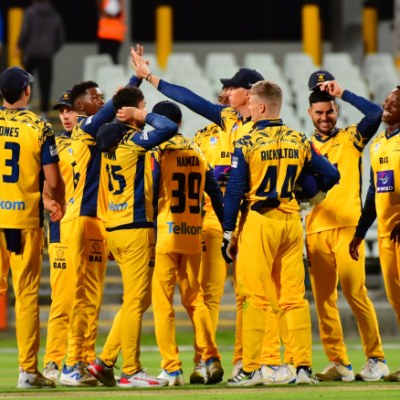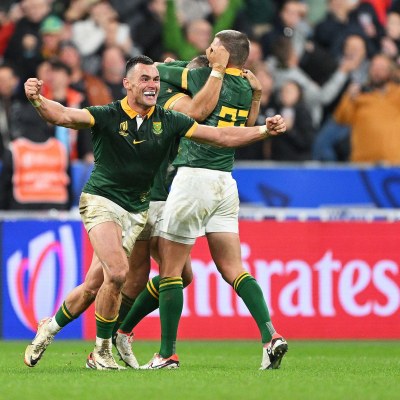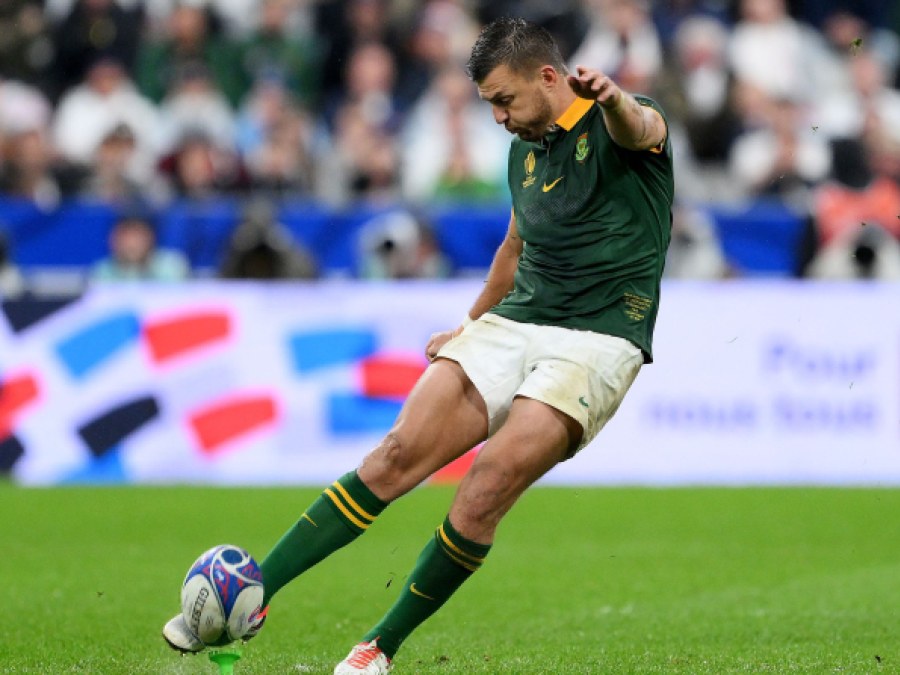
-
Category
-
Submitted By
-
26Oct, 2023
As the dust settled, it was clear that one of these fierce rivals, South Africa or New Zealand, would etch their name in history with a record fourth World Cup victory. With England's departure from the competition, the coveted trophy appears destined to remain in the southern hemisphere.
South Africa's sheer dominance in the scrum played a pivotal role in their triumph over England. However, this defining moment materialized in the dying minutes of another nail-biting knockout match at this World Cup. Replacement props Ox Nche and Vincent Koch executed a monumental, last-ditch effort to win a crucial penalty near the halfway line. This set the stage for the game-winning kick by replacement flyhalf Handre Pollard, executed with less than two minutes left on the clock.
Pollard's ice-cold accuracy was reminiscent of his late-game heroics in the thrilling 29-28 Springboks victory over the host nation, France, in the quarterfinals.
In the post-match euphoria, Pollard remarked, "It's unbelievable. It's a lot of relief in this moment. Frustrated we weren't at our best tonight, especially in that first half. We knew we had so much more to give but fair play to England, they put us under pressure in exactly the right areas. But, jeez, the fight we showed never giving up, it is what we stand for as a team and as a nation."
Throughout the match, England held the lead until Pollard's monumental kick from a distance of approximately 50 meters catapulted the Springboks into their second consecutive Rugby World Cup final. This heartbreaking defeat denied England their long-awaited redemption. South Africa has repeatedly proven to be their nemesis, having defeated them in quarterfinals, semifinals, and two finals, including the title clash four years ago.
England's captain, Owen Farrell, in a poignant moment of reflection, commented, "After a difficult loss like this all that stands with me is how proud I am to be English. You can always look back at things but South Africa are a top, top side. They have shown that over the course of the World Cup."
Throughout the majority of the match, England expertly executed their game plan, asserting control and commanding the field. They capitalized on their strategy of sending high kicks into the Springboks' territory. England's scrumhalf, Alex Mitchell, and flyhalf, Owen Farrell, skillfully maneuvered the high bombs, causing constant trouble for the Springboks. England displayed supremacy in nearly every facet, with Farrell adding four penalties in the first half and a remarkable long-range drop goal in the second half, resulting in a 15-6 lead.
The haunting scoreline echoed past encounters, with England suffering a 15-6 defeat to the Boks in the 2007 final in Paris, which only added to the emotional complexity of the match.
[Submitted by Kevin Rademeyer]
-
Category
-
Submitted By
-
22Oct, 2023
MUMBAI, Saturday - The Wankhede Stadium in Mumbai witnessed a scintillating performance in the ICC Men’s Cricket World Cup as Heinrich Klaasen's remarkable century propelled South Africa to a historic 229-run win over defending champions England. The right-handed dynamo blazed through 109 runs off just 67 balls, embellishing his innings with 12 boundaries and four colossal sixes, setting an imposing target of 400 runs for the 2019 winners.
Klaasen found solid support from the sensational Marco Jansen, who not only smashed an unbeaten 75 off 42 deliveries, featuring three fours and six maximums but also contributed with the ball, grabbing two crucial wickets for 35 runs.
In the absence of captain Temba Bavuma due to illness, Reeza Hendricks (85 off 75 balls, including 9 fours and 3 sixes) and Rassie van der Dussen (60 off 61 balls, with 8 boundaries) also showcased their prowess with crucial half-centuries.
However, England's response was lackluster as they crumbled to a mere 170 runs, getting bowled out in just 22 overs, marking their heaviest One-Day International (ODI) defeat.
For the South African team, this victory was a spectacular comeback following a disappointing performance earlier in the week when they suffered a shocking loss to the Netherlands in Dharamsala. With this win, they climbed to the third position on the table, trailing leaders India and New Zealand by just two points. Their next challenge awaits them on Tuesday when they take on Bangladesh at the same venue.
The South African side will be riding high on confidence after their exceptional display against one of the world's top cricket teams.
England's decision to field first after winning the toss turned out to be a regrettable one, as they conceded the highest ever runs in their ODI history. Despite an early dismissal of Quinton de Kock for just four runs, the Proteas built a solid foundation with a 121-run partnership between Van der Dussen and Hendricks. Klaasen and Markram further accelerated the scoring, putting on 69 runs for the fourth wicket. After the departure of the stand-in captain and David Miller, the South Africans unleashed a run-scoring frenzy.
Klaasen and Jansen's record-breaking sixth-wicket partnership of 151 runs propelled the South African total to 399 for seven, surpassing the previous record of 137 set by Hansie Cronje and Shaun Pollock.
In response, England's batting faltered as they lost key players like Jonny Bairstow, Dawid Malan, Joe Root, and Ben Stokes within the first nine overs. Their innings collapsed to 68 for six. Despite a late fightback from Gus Atkinson and Mark Wood, who added 70 runs for the ninth wicket, it wasn't enough to prevent a record-breaking defeat.
England will need to regroup and recover from this devastating loss as they continue their campaign in the World Cup.
[Submitted by Estea Rademeyer]

-
Category
-
Submitted By
-
22Oct, 2023
20 October 2023- In the electrifying clash at the Stade de France on Friday, Argentina is set to grace the semi-final stage for the third time, a journey that started back in 2007 and repeated itself in 2015. Meanwhile, the formidable New Zealand squad finds themselves in their ninth Rugby World Cup semi-final, an impressive testament to their rugby dominance.
Marcos Kremer, the unstoppable force in the Argentine lineup, has been a constant presence in their remarkable journey to the semi-finals. He's been a relentless tackling machine, leading the way with a staggering 55 tackles, leaving his fellow back-rower, Juan Martin Gonzalez, trailing behind by 16 tackles. Juan Martin Gonzalez, the only other Puma to have been in the starting lineup for all five matches, has been nothing short of dominant in each of them.
For Sam Cane, the All Blacks' captain, the Rugby World Cup had a frustrating beginning, marred by a back spasm that forced him to sit out New Zealand's first two pool games, including the high-stakes opener against France. However, his triumphant return off the bench against Italy and his belated starting role in the final pool match against Uruguay marked a significant turning point.
In the epic quarter-final showdown against Ireland, Cane showcased his exceptional leadership, making a jaw-dropping 21 tackles, more than anyone else on the pitch. Some keen observers argue that this incredible performance ranks among his finest moments in the iconic black jersey. Cane's resilience and impact on the field prove that even setbacks can't deter a true rugby legend from making his mark on the grandest stage of them all.
Santiago Carreras, a versatile talent in the Argentine squad, embarked on his Rugby World Cup journey as a full-back four years ago at RWC 2019, but fate saw him play on the wing in four games. In the past two years, he underwent a transformation, transitioning to the playmaker role for both his club, England's Gloucester, and his national team. The results have been nothing short of remarkable, and Carreras has embraced the newfound responsibility with open arms in this RWC.
While Argentina has mixed up their game plan with a plethora of attacking kicks, Carreras' exceptional pace and running prowess have remained a vital component of their semi-final journey. The 25-year-old dynamo has carried the ball 46 times across his four starts, not to mention a late replacement outing, leaving an indelible mark on the tournament.
On the other side of the pitch, Richie Mo’unga, the maestro of the fly-half position, has showcased his immense talent throughout this RWC. His opening night performance against France left spectators in awe, marked by a series of pinpoint attacking kicks, a heroic try-saving tackle, and a jaw-dropping range of passing. His spectacular break in a classic quarter-final encounter against Ireland set up a memorable try for Will Jordan, emphasizing the versatile skill set he brings to the All Blacks. Mo'unga's ability to keep the opposition defense guessing is poised to be a key factor in this upcoming semi-final.
Both teams have full-backs who relish launching blistering attacks from deep within their territory. Juan Cruz Mallia, originally a center, has donned the number 15 jersey for the past two years. His relentless ball-carrying has seen him carry the ball a staggering 44 times, and he's accumulated the most meters gained (381) of any Los Pumas player in this competition.
Meanwhile, Beauden Barrett, a RWC 2015 champion and two-time World Rugby Men's 15s Player of the Year, continues to defy the aging process. The 32-year-old has proven himself as New Zealand's top ball-carrier (49) and has covered more ground (488 meters) than any other All Black in this Rugby World Cup. His attacking kicks remain a potent weapon, adding another layer of danger to the All Blacks' arsenal.
In the midst of this thrilling showdown, the two teams are undoubtedly aware of the gravity of the occasion. New Zealand's head coach, Ian Foster, emphasizes the significance of focusing on the present, acknowledging that past results won't guarantee success in this World Cup semi-final. The physicality of the game, akin to their previous battle against Ireland, remains a critical aspect, especially when facing Argentina's combative style of play.
Foster acknowledges the return of number eight Facundo Isa to the Argentine lineup, recognizing him as a powerful and destructive ball-carrier. Discipline, a recurring concern after receiving yellow cards against Ireland, is vital, and the team strives to maintain their improved level of control and accuracy.
As for the presence of legendary former All Blacks fly-half Dan Carter at training, Foster highlights the importance of such legends, their love for the jersey, and the inspiration they bring to the current team. Foster's focus remains firmly on the present and the challenge that lies ahead.
Damian McKenzie, who was on the bench against Ireland but didn't get a chance to play, values the presence and guidance of legends like Dan Carter, particularly in assisting the kickers. He emphasizes that his role on the bench is about making an impact, not trying to prove a point or make up for lost time.
Regarding the crowd's behavior during the haka, McKenzie notes that while it's not within their control, they remain focused on expressing themselves on the field. Their pre-match rituals include some card games and a bit of chocolate the night before, with a focus on staying calm and preparing for a late kick-off.
Anton Lienert-Brown, reflecting on the painful semi-final defeat in 2019, highlights the experience gained and the determination of the team to ensure such a loss doesn't happen again. He underscores that the World Cup is their ultimate goal, and every match is a step toward achieving it. In the next 24 hours, he looks forward to a game of '500' with Damian McKenzie and relishing the build-up to the match.
[Submitted by Kevin Rademeyer]
-
Category
-
Submitted By
-
22Oct, 2023
In the highly anticipated second semi-final set to unfold at the iconic Stade de France on Saturday, England and South Africa will lock horns at this stage for the sixth time, creating a spectacle that promises to be a thrilling battle. The Red Rose boasts a remarkable track record, having emerged victorious in four of their five previous semi-final encounters, while the Springboks have clinched the title on three occasions, each time following their semi-final triumph.
Maro Itoje and Eben Etzebeth stand as towering figures at the heart of their respective country's forward packs, adding an element of intense rivalry to this clash. This semi-final marks the eighth time these formidable locks will face off, including their involvement in three British and Irish Lions tests in 2021. Their head-to-head encounters have seen England and South Africa claim two wins each, with Etzebeth's pivotal role in the Springboks' Lions series victory standing out as a significant highlight.
Both Itoje and Etzebeth excel in exerting pressure on the opposition's lineout, with a knack for creating turnovers through their formidable tackling abilities. Etzebeth, in particular, has shone at this Rugby World Cup, notching up an impressive seven dominant tackles, while Itoje has showcased his skills with three crucial breakdown steals.
The inside centers of both teams hold the key to breaching their opponents' defense and generating attacking momentum. Manu Tuilagi, a powerful ball-carrier for England, made a notable entry onto the international stage just before the 2011 Rugby World Cup, amassing nine tries in his first 17 tests. Injuries curtailed his appearances in the 2015 World Cup, but he made a resounding return in time to contribute to England's journey to the 2019 final, marking his third appearance at a Rugby World Cup.
Damian de Allende, a year younger at 31, is no less influential in the South African camp. The Springboks' center has made his mark in the tournament, scoring a pivotal try in their quarter-final win over France and surpassing all teammates with 14 defenders beaten.
A pivotal aspect of this second semi-final will likely be the battle in the lineout, where hookers Jamie George and Mbongeni Mbonambi will strive to execute their throws accurately under intense opposition pressure. George, England's 32-year-old hooker, has demonstrated unwavering consistency in the set-pieces, boasting an 88 percent lineout success rate and a perfect record when close to the opposition's try line.
South Africa's coaching staff's trust in the durable Mbonambi was evident when they opted not to bring in another frontline hooker after Malcolm Marx's injury. Mbonambi, also 32, played a pivotal role in matches, including 64 minutes against Ireland in the pool stage and a late appearance in the epic quarter-final against France.
In light of recent reports of a 'death threat' made against South African scrum-half Cobus Reinach following their quarter-final win over France, the South African coaching staff expressed their awareness of the situation and emphasized their commitment to protecting their players and their opposition to such behavior.
The selection of the England team has not yielded significant surprises, with Marcus Smith ruled out due to concussion, resulting in the elevation of George Martin, a promising young player, to the starting lineup. England, in general, has evolved into a physically imposing team, impressing with their performance against Fiji in the quarter-finals.
While England's recent form might raise questions, South Africa's coaching staff recognizes the potential of their semi-final opponents, particularly noting their physicality and the example set by their previous performance against New Zealand in Japan.
Acknowledging that England has evolved under the guidance of Steve Borthwick and presents a different challenge compared to 2019, the South African coaching staff refrains from underestimating their formidable opponents. They commend England's adaptability and acknowledge the physicality they bring to the field.
Mbongeni Mbonambi, the South African hooker, addresses the notion of England seeking revenge for their 2019 Rugby World Cup defeat. He underscores the importance of not relying solely on emotions during a match and emphasizes the team's focus on strategy and execution.
Regarding the recent HIA assessment during the France match, Mbonambi assures that all medical protocols were followed, and his well-being was the primary concern.
When asked about their status as favorites, Mbonambi and the South African team maintain that they do not see themselves as favorites and refrain from labeling England as underdogs, expressing respect for their formidable opponents.
Despite the thrilling semi-final clash in rugby, South Africa's participation in the Cricket World Cup on the same day is acknowledged. The South African coaching staff and team convey their support and solidarity with the Proteas, emphasizing that they are proud representatives of South Africa, united in their efforts on the world stage.
[Submitted by Estea Rademeyer]
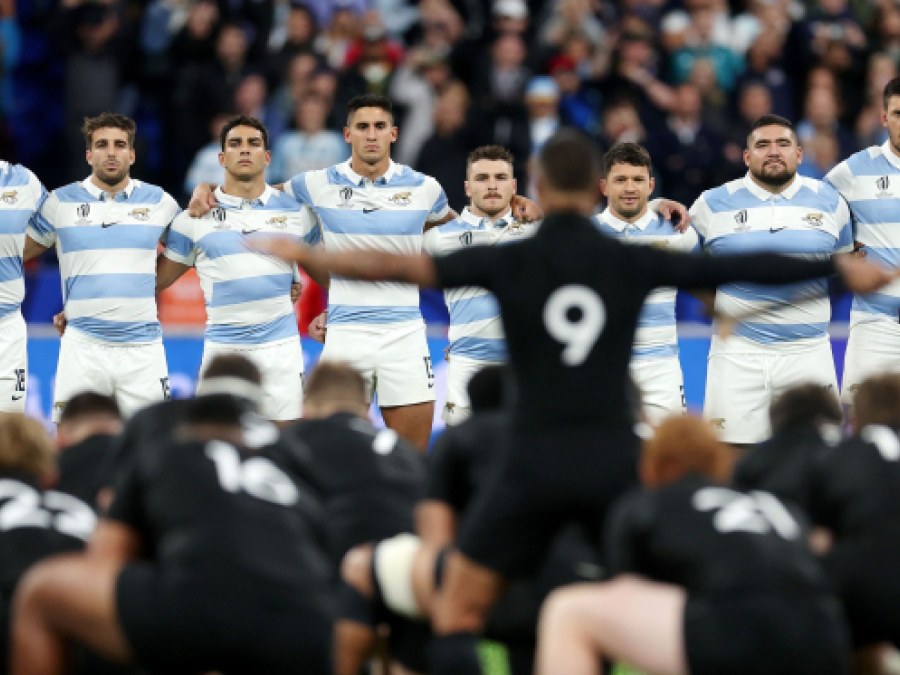
-
Category
-
Submitted By
-
22Oct, 2023
PARIS, The City of Lights - The majestic Stade de France bore witness to an awe-inspiring spectacle as the indomitable All Blacks secured their ticket to next Saturday's grand finale in a dazzling, seven-try display, en route to what could be an unparalleled fourth Rugby World Cup victory.
In a whirlwind contest, the Argentinian side initially seized the spotlight with an early Emiliano Boffelli penalty. However, the All Blacks swiftly unleashed a breathtaking surge, with two mesmerizing tries within five minutes from the dynamic duo of Will Jordan and Jordie Barrett, sending shockwaves through the stadium.
Shannon Frizell contributed to the majestic performance, concluding the first half with a third scintillating try, and the irrepressible Aaron Smith graced the scoreboard early in the second period, extending the All Blacks' lead to an insurmountable level.
Frizell, thirsting for glory, notched his second, while Will Jordan, with an incredible hat-trick, etched his name alongside legends like Jonah Lomu (1999), Bryan Habana (2007), and Julian Savea (2015) by claiming an astonishing eighth try in a single Rugby World Cup campaign, firmly securing the All Blacks' place in their record fifth final.
Jordie Barrett, who rendered a colossal defensive effort, earned the illustrious title of Mastercard Player of the Match, and, with elation in his voice, declared, "It's so sweet, it's special times."
Captain Sam Cane, in sheer admiration of his comrades, praised, "I thought our forwards did an outstanding job; our set-piece was impeccable. We owned the mauls and earned valuable penalties, exerting relentless pressure on the valiant Argentinians."
In stark contrast, Argentina's captain, Julián Montoya, humbly conceded that they were outclassed, saying, "An awesome team, they were unquestionably superior today. We must reflect upon our set-piece and the errors we made. At every opportunity, they converted, and we need to delve deep within ourselves."
The brilliant tactician, New Zealand head coach Ian Foster, acknowledged Argentina's early onslaught, stating, "They hurled everything at us from the outset. Our defensive resilience held firm, and when the ball was in our possession, we executed devastatingly. Those three or four crucial minutes before half-time were pivotal; those eight points endowed us with a critical buffer."
The All Blacks now prepare to return to the luminous Stade de France next Saturday, bracing for a momentous showdown against either South Africa or the nemesis from the 2019 World Cup, England. Jordie Barrett emphasized, "We stumbled at the semi-final juncture four years ago. Our mission isn't complete yet."
Even in defeat, Argentina's head coach, Michael Cheika, rallied his troops for one last glorious battle, affirming, "We yearn to return home adorned with a medal. Next week's Bronze final is monumental for us. Tonight stings, for we genuinely believed we could leave our mark, and the agony lingers."
[Submitted by Kevin Rademeyer]
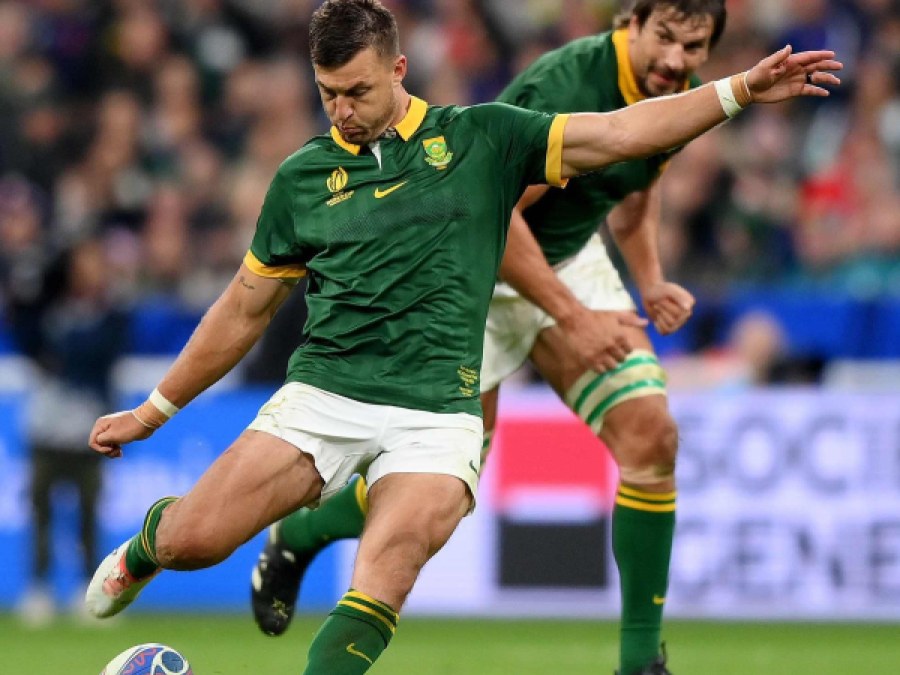
-
Category
-
Submitted By
-
16Oct, 2023
The Quarter-finals lived up to their promise, delivering a spectacular conclusion. An extraordinary contest, filled with dramatic twists, concluded with French players scattered across the field, torn between despair and exhaustion, as they were denied the opportunity to triumph at their own World Cup.
In a stunning turn of events, South Africa emerged victorious, marking a significant victory for the global south. They now advance to the semi-finals against England, the sole northern team remaining in the tournament. Even the most fervent supporters of the northern teams would concede that their representatives did not display the best of northern rugby.
This weekend's quarter-finals showcased the world's four best teams, creating a clash of titans. The clash between Ireland and New Zealand on Saturday and the match we witnessed on this day would have graced any World Cup final.
The game witnessed the brilliant French, known for their free-flowing style, going head-to-head against the formidable Springbok defense. The pace and intensity of the match from the outset were unmatched, with France setting the tempo.
However, the Springboks, renowned for their resilience, repeatedly thwarted the French with their trademark virtues. Eben Etzebeth's dominating presence around the field, especially menacing Antoine Dupont, left an indelible mark on the game. Damian de Allende and Jesse Kriel, alongside their formidable pack, also disrupted the French midfield.
While France may have won praise for their artistic flair, it was the Springboks who demonstrated the most efficient path to victory. As the clock ticked down, France's relentless pursuit of an expansive running game slowly unraveled, yet they persisted until the final moments.
The match began at a breakneck pace, filled with confidence and hope for the French, who opened the scoring in the fourth minute when Cyril Baille crossed the line after a precise attacking lineout. The first half continued with dramatic shifts in momentum.
While France dictated the game with ball in hand, the Springboks exploited a weakness in the French defense, scoring two tries in 10 minutes. Cobus Reinach's up-and-under led to Kurt-Lee Arendse's breakaway try, followed by Manie Libbok's precise kick and Cameron Woki's inability to gather, allowing De Allende to score South Africa's second try.
The back-and-forth nature of the match continued, with France equalizing shortly after. Antoine Dupont's quick tap penalty set up Peato Mauvaka's try, and Cheslin Kolbe's brilliant block on Thomas Ramos's conversion kept the scores level.
The first half concluded with a yellow card shown to Etzebeth after an accidental head clash, and Ramos's penalty allowed France to take a 22-19 lead into the break.
The second half maintained the thrilling pace, but the French attacks gradually lost their edge. The scoring slowed down, with France only adding another Ramos penalty in the third quarter. South Africa seized control as the match reached its climax.
A break from the scrum disrupted the French defense, and a deep kick forced a desperate chase. Handré Pollard's conversion following Etzebeth's powerful run gave South Africa a one-point lead that held until the final minutes, despite a penalty exchange.
As the clock turned red, France launched one final desperate attack from their half, showcasing brilliance and intensity, but ultimately succumbing to desperation. A knock-on felt inevitable, sealing the Springboks' path to another final.
[Submitted by Kevin Rademeyer]
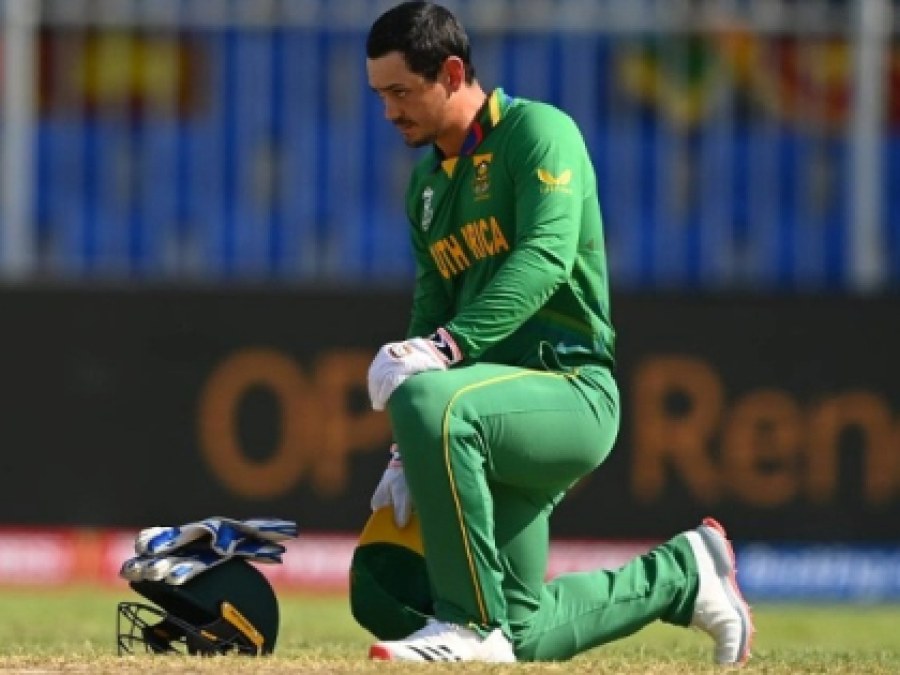
-
Category
-
Submitted By
-
13Oct, 2023
Lucknow, Thursday - Quinton de Kock's exceptional batting performance secured South Africa's second successive victory in the ICC Men's Cricket World Cup, as they defeated Australia by an impressive margin of 134 runs at the BRSABVE Cricket Stadium in Lucknow.
The left-handed maestro, who had previously dazzled with a century in South Africa's opening match against Sri Lanka, continued his remarkable form by scoring 109 runs off 106 balls, comprising 8 fours and 5 sixes, marking his 19th One-Day International (ODI) century. This extraordinary innings, set in motion by Rob Walter's side after being asked to bat first, enabled South Africa to post a total of 311 for seven.
The South African bowlers played their part as well, with Kagiso Rabada taking three crucial wickets for just 33 runs. Lungi Ngidi (1/18), Keshav Maharaj (2/30), and Tabraiz Shamsi (2/38) also displayed their bowling prowess, ultimately dismissing the Australian side for a mere 177 runs with almost ten overs to spare.
The victory proved to be an outstanding achievement for the Proteas, ranking among their finest performances in the history of the tournament. Meanwhile, Australia suffered their most substantial World Cup defeat, adding to South Africa's glory.
This win propelled South Africa to the top of the table, with their next game scheduled against the Netherlands in Dharamsala on Tuesday.
In the match against Australia, South Africa asserted their dominance from the start. Quinton de Kock and captain Temba Bavuma (35) set a strong foundation with a 108-run opening partnership. Rassie van der Dussen (26) then joined forces with de Kock, contributing 50 runs for the next wicket, while also achieving the distinction of becoming the second-fastest batter to reach 2000 international runs, second only to the legendary Hashim Amla.
Although de Kock was dismissed just before the 200-run mark, South Africa managed to set a formidable target of 312 for victory. Aiden Markram, the T20 International captain, played a significant role with his 56 runs off 44 balls, supported by Heinrich Klaasen (29) and Marco Jansen (26).
The South African bowlers made a remarkable improvement over their performance in the previous game against Sri Lanka, consistently taking wickets. Marco Jansen (2/54) removed Mitchell Marsh (7) in the sixth over, while the lethal David Warner (13) fell in the seventh over.
Key batsman Steve Smith (19) was the first victim of Kagiso Rabada, leaving Australia at 50 for three, and Josh Inglis (5) was bowled out by a brilliant delivery from Rabada.
Glenn Maxwell (3) fell to a catch and bowled by Keshav Maharaj, and Marcus Stoinis (5) was caught behind off Rabada, leaving Australia reeling at 70 for six.
Despite this dire situation, Marnus Labuschagne (46) and Mitchell Starc (27) managed to add some respectability to the Australian scoreboard. Tabraiz Shamsi eventually cleaned up the tail, resulting in Australia being bowled out in just 40.5 overs.
[Submitted by Kevin Rademeyer]
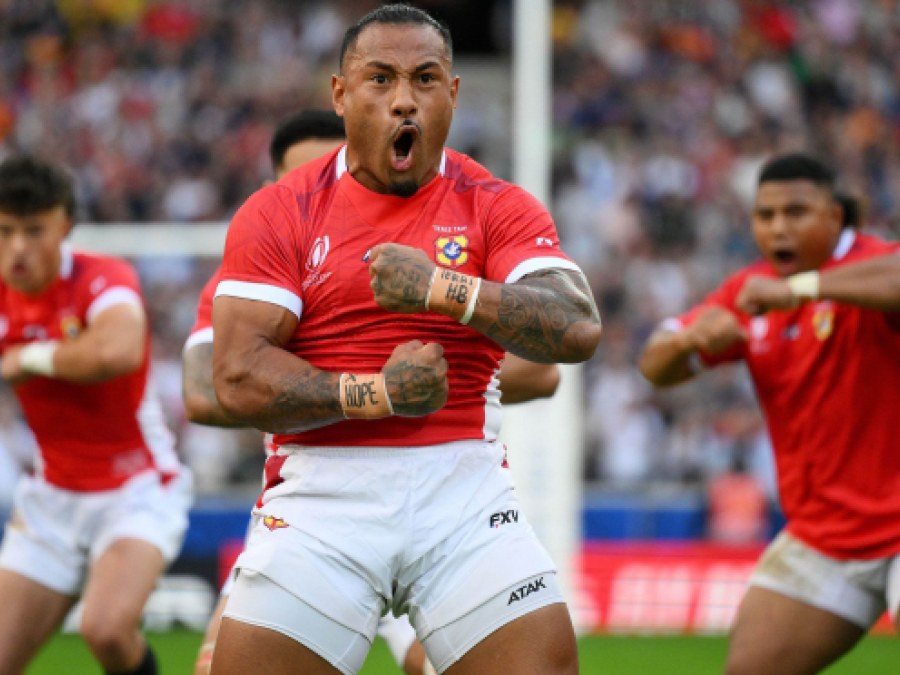
-
Category
-
Submitted By
-
10Oct, 2023
World Rugby Chairman Sir Bill Beaumont has hailed the pool stage of Rugby World Cup 2023 as showing “the best of friendship, France and rugby” and vowed to facilitate greater opportunity for performance unions to close the competition gap.
Across 40 matches, 20 teams played in nine venues the length and breadth of France, captivating audiences and capturing hearts and minds as the country united behind the tournament.
On the field, history was made as Chile made their debut and Portugal claimed their first-ever victory, while Fiji qualified for their first quarter-final in 16 years to set the tournament alight.
With a mantra of ‘rugby’s ultimate celebration of togetherness’, the world has engaged in-stadia, in rugby villages, in living rooms, cafés, bars and online in record numbers.
“France 2023 has captured the imagination and warmed hearts the length and breadth of this rugby-loving nation.” said Beaumont.
“With an average attendance of 47,000 across the nine beautiful stadiums, more than a million fans mixing in rugby villages and an unprecedented social footprint of almost one billion fans, this is shaping up to be the social Rugby World Cup.”
France’s final Pool A match against Italy drew an audience of 13 million on French broadcaster TF1, peaking at 14.5 million, representing the second-biggest audience of the year for the broadcaster, just behind Les Bleus' opening encounter against New Zealand.
Significantly, the French rugby audiences are the sport's biggest in the country since they last hosted the tournament in 2007.
Meanwhile, Beaumont reiterated his pledge to provide performance unions with greater certainty and opportunity to be more competitive on the world stage, stating that the sport was united in a vision to open the door to a new dawn.
“At this stage of the competition, we say goodbye to 12 teams,” Beaumont said. “I want to assure everyone that the likes of Portugal. Samoa, Tonga, Uruguay, Chile and Georgia may be gone, but they are certainly not forgotten.
“We must, and will, do everything we can to provide greater certainty and opportunity of regular high-level competition for these teams.
“They are central to our discussions on a reimagined international calendar that will benefit the many, not the few. This, in turn, will enable us to arrive at Rugby World Cup 2031 in USA anticipating a genuinely competitive and unpredictable Rugby World Cup which is great for fans, broadcasters and commercial partners.”
[Submitted by Kevin Rademeyer]
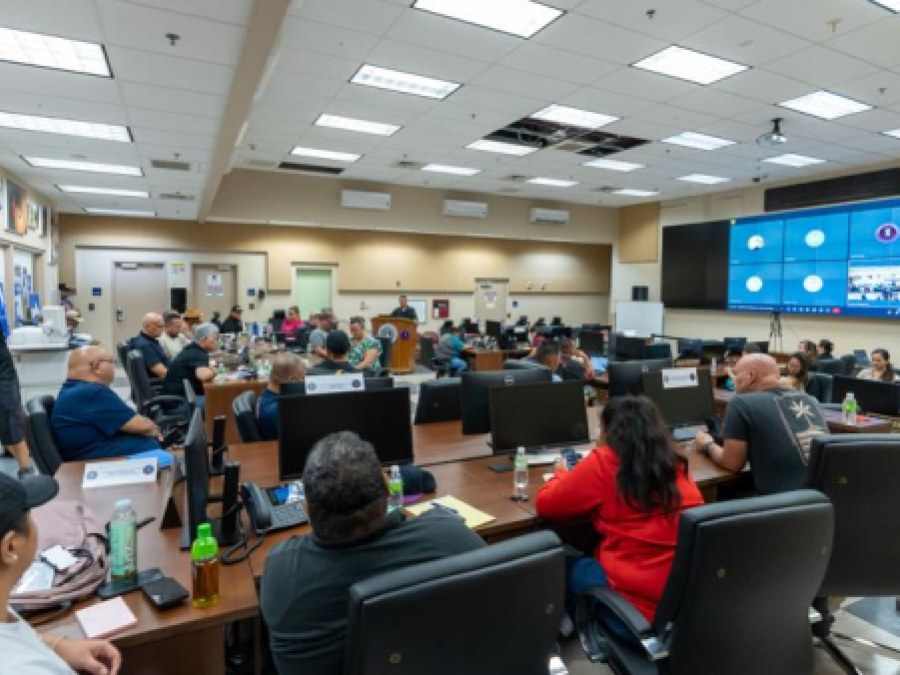
-
Category
-
Submitted By
-
09Oct, 2023
GOVERNOR Arnold I. Palacios on Sunday declared Typhoon Condition III for Saipan, Tinian, and Rota.
Typhoon Condition III means that damaging winds of 39 mph or greater are possible beginning Tuesday morning, and typhoon force winds of 74 mph or greater are possible Tuesday afternoon or evening.
As of 7 p.m. Sunday, based on information received from the National Weather Service in Tiyan, Guam, Tropical Storm Bolaven was about 575 miles southeast of Saipan and about 565 miles east-southeast of Guam with maximum sustained winds of 45 mph. It was headed west at 8 mph.
Bolaven was expected to make a slight turn toward the west-northwest with a slight increase in forward speed through Monday evening.
As of late Sunday afternoon, some businesses and homes on Saipan had already put up their typhoon shutters.
CNMI residents are urged to take the following preparatory measures:
• Fuel up your gas vehicles and generators.
• Secure loose debris and belongings around your household or yard.
• Those living in flood-prone areas should clear drainage areas and unblock storm drains to minimize flooding.
• Secure important documents such as birth certificates, tax papers, and insurance documents, and keep copies in a weather-proof bag.
• Prepare to board up windows or close shutters.
• Keep an emergency preparedness kit in your household, including first-aid kits, batteries, flashlights, toiletries, and a portable stove
• Stock up on food and water, as appropriate, for your household.
• Stay up to date with the latest information from the National Weather Service and the CNMI Office of Homeland Security and Emergency Management and other official sources.
Flood watch
A flood watch is also in effect for Saipan, Tinian, and Rota.
“As the storm gets closer, showers are expected to increase significantly. The latest model guidance indicates rainfall potential of 6 to 10 inches, with locally heavier amounts in excess of 12 inches possible. This would result in extensive flash flooding across the islands,” HSEM said.
For more information, call the CNMI Emergency Operations Center State Warning Point at (670) 237-8000 or (670) 664-8000. For those in the Northern Islands, contact the CNMI EOC State Warning Point at high frequency single side band radio on frequency 5.205.0.
[Submitted by Robert Mendiola]
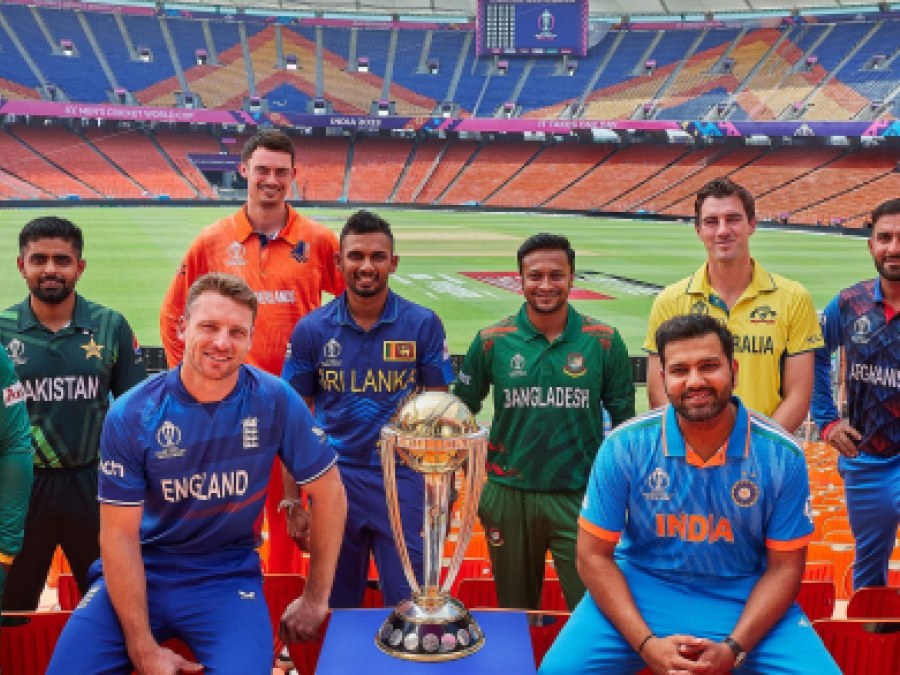
-
Category
-
Submitted By
-
05Oct, 2023
In a blaze of high hopes, Jos Buttler had boldly declared that England would forge new World Cup memories in 2023. However, their campaign got off to an all-too-familiar start: the daunting task of reviving their prospects following a devastating group-stage defeat.
England did have a blueprint for bouncing back from such setbacks. In 2019, their loss to Australia forced them to win four consecutive matches to claim victory in the competition. Similarly, in last year's T20 World Cup, a defeat to Ireland placed them in a similar predicament.
Nevertheless, despite drawing strength from recent history, England hadn't felt as thoroughly outmatched in a global event since 2015, when they suffered a crushing nine-wicket defeat to New Zealand at the Narendra Modi Stadium.
Amidst this disappointment, Joe Root's well-crafted 77 provided some relief regarding his own form, with him stressing the importance of maintaining composure. He pointed out that even World Cup-winning sides have encountered hurdles along the way, citing England's own struggles in 2019.
Contrary to expectations of tight contests between England and New Zealand in global events, the defending champions were thoroughly dismantled. Devon Conway and Rachin Ravindra, close friends from Wellington, compiled an incredible unbeaten partnership of 273 runs. England's primary frustration stemmed from their batting display, as they managed 282 for nine on a batting-friendly pitch.
The peculiar record of all 11 batsmen reaching double figures in an ODI for the first time in 4,658 matches was accompanied by a sense of missed opportunities. Only Root exceeded 43 runs, and the partnership between Root and Buttler, which took England to 188-4 in the 34th over, was the only one to surpass 40.
England's regrets extended to their batting approach, marked by moments of timidity. While they struck 21 fours and six sixes, amassing 120 runs from boundaries, Conway and Ravindra pummeled 30 fours and eight sixes, racking up 168 runs from boundaries. Several England batsmen fell victim to half-hearted shots, failing to capitalize on scoring opportunities.
England vowed to rectify these shortcomings in their upcoming matches, with Root emphasizing their intent to play more aggressively and impose pressure on opponents. They aimed to achieve imposing scores that could overwhelm the opposition.
Remarkably, New Zealand defied expectations by altering their usual playing style. Despite fielding an ostensibly imbalanced side due to injuries, they opted for just three specialist bowlers. This decision paid off as they strategically removed England's dangerous hitters, Buttler and Livingstone, in the late stages of the innings.
Unfazed by the early loss of Will Young, Conway and Ravindra exploited the fielding restrictions during the powerplay, reaching 81 for one in the first ten overs. For Conway, this performance reaffirmed his status as a potential top run-scorer in the World Cup, while Ravindra's maiden international century marked the emergence of a promising talent.
England's bowlers struggled to contain the Kiwi batsmen, with Wood and Woakes conceding a combined 100 runs in just 11 overs under the lights. Moeen Ali, Adil Rashid, and Liam Livingstone, England's spin trio, also had a tough outing, conceding 131 runs in 19.2 overs.
As the Ahmedabad evening cooled down, New Zealand continued to heat up, securing a victory that could have far-reaching implications for the tournament. While Buttler acknowledged a loss as a loss, qualification could ultimately hinge on net run rate, presenting yet another challenge for England. They now face the daunting task of winning six of their remaining eight matches to reach the semi-finals.
[Submitted by Kevin Rademeyer]
















